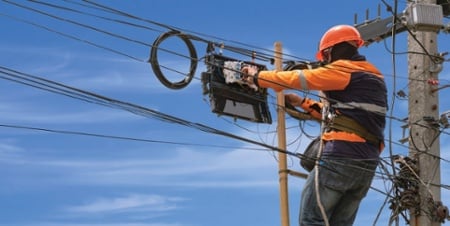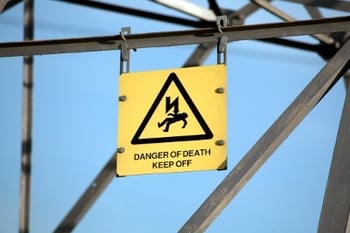 The last mile of Fiber to the Home (FTTH) and Fiber to the Cabinet (FTTC) aerial fiber deployments often run through crowded environments, where space is at a premium. Street lights, existing telephone poles, power lines, street signs, buildings and trees all jostle for position, especially in urban areas.
The last mile of Fiber to the Home (FTTH) and Fiber to the Cabinet (FTTC) aerial fiber deployments often run through crowded environments, where space is at a premium. Street lights, existing telephone poles, power lines, street signs, buildings and trees all jostle for position, especially in urban areas.
Plotting a route through these obstacles can be difficult and time-consuming, adding to cost and disruption. Installing new infrastructure (such as aerial poles) can be prohibitively expensive - or it can be difficult to get the relevant permissions from local authorities to erect them if that means closing roads.
The Key Properties of ADSS Cables
One way round this is to install aerial fiber cables close to power lines, such as on mixed use poles which also carry electricity. Obviously, these fiber cables need to be resistant to electricity, which can be difficult as many aerial cables contain high tensile steel (HTS) for tensile strength, or aluminum barriers to protect the optical fiber from crushing forces.
And, of course, they still have to meet all same criteria as other aerial cables, with the ability to cope with extreme weather conditions such as wind, ice and snow - as well as withstanding damage from birds and other animals over very long service lifetimes.
All-Dielectric Self Supporting (ADSS) cables have been specially designed to meet this need. Rather than metal, they contain glass reinforced plastic (GRP) or other supporting members, giving them dielectric, non-conducting properties. Metallic barriers and layers are also replaced by non-conductive materials, such as PBT and PA12, with aramid also lending support.
High tensile modulus steel can be manipulated to resist elongation, meaning that it will break long before the precious optical fiber has been stretched or strained beyond one per cent. In contrast, although dielectric strength yarns and composite materials can be made to have very high breaking strains, they often tend to stretch a bit first before they give way and break. This can’t be tolerated with glass optical fiber cable, so ADSS manufacturers therefore have to overcome this challenge through clever construction methods.
 The Advantages of ADSS
The Advantages of ADSS
ADSS cables deliver benefits in four key areas:
1. As they can be placed on electrical transmission and utility lines above the voltage rated for non-dielectric cable (typically above 11kV), it allows the existing poles to be re-used. This brings down costs and speeds up deployments as there is no need to install new poles, which normally requires permission from local authorities and therefore adds to deployment time.
2. Cables are self supporting, meaning that they do not need additional infrastructure when being deployed. This means they can be installed in a single pass, saving time and money. Often, if cables are small enough standard pole hardware can be used. However, you should ensure that these pole attachments are also non-metallic - always check the specification, and, if in doubt, ask the planner.
3. As ADSS cables are lightweight (PPC’s version weighs just 51lb (23kg) per kilometer), they do not add dramatically to strain on existing poles. This removes the need for expensive remedial works to strengthen them.
4. Advanced ADSS cables are ruggedized and flexible, enabling them to cope with extreme weather conditions, and have carbon black additives for UV resistance. They can be easily bent around obstacles without impacting performance.
However, installers need to focus on three areas to ensure that ADSS deployments are reliable over the long term:
1. Prevent Moisture
A major enemy of ADSS cables is moisture. This reduces the jacket insulation, and consequently can lead to the formation of high-resistance "dry bands", which have a relatively high voltage across them. These can erode the jacket and cause electric current arcs to damage the cable, leading to eventual failure. Salt water, or gases from nearby factories, are much more likely to harm cables than normal rain or fog, due to their corrosive properties.
2. Protect Against Damage
As for any aerial cables, they must be able to cope with extreme temperatures. Additionally, due to the closeness of electrical power lines, installations have to be planned carefully so that high winds or ice melts do not cause the cable to hit live wires. Some ADSS cables use a water-blocking gel to provide support – it is important that this can cope with low temperatures and does not become so stiff that the fibers are put under strain.
3. Protect Against Wind
Due to their combination of light weight and relatively high tension, vibration can be a problem for aerial cables, leading to potential damage over the long term. This is relatively easy to guard against and can be solved by installing anti-vibration dampers near the support points on each span.
As last mile environments become increasingly crowded, re-using infrastructure such as poles delivers major benefits in speed and reduced costs. Those looking to carry out aerial deployments close to power lines should therefore consider ADSS when planning their installs.



